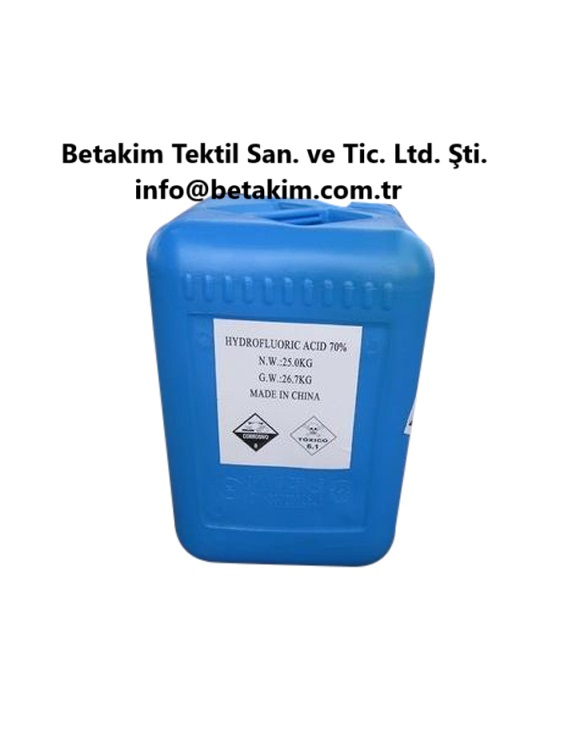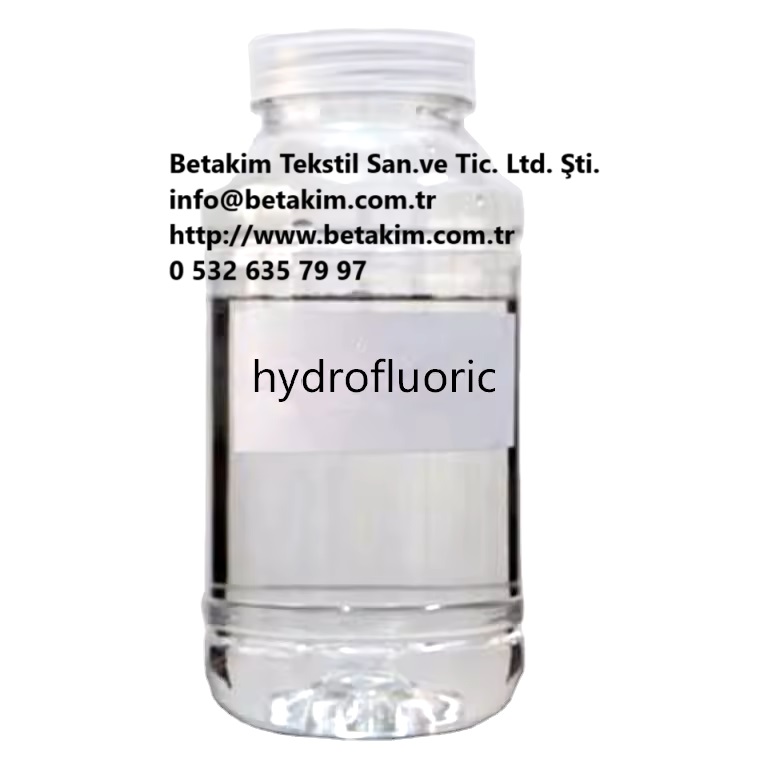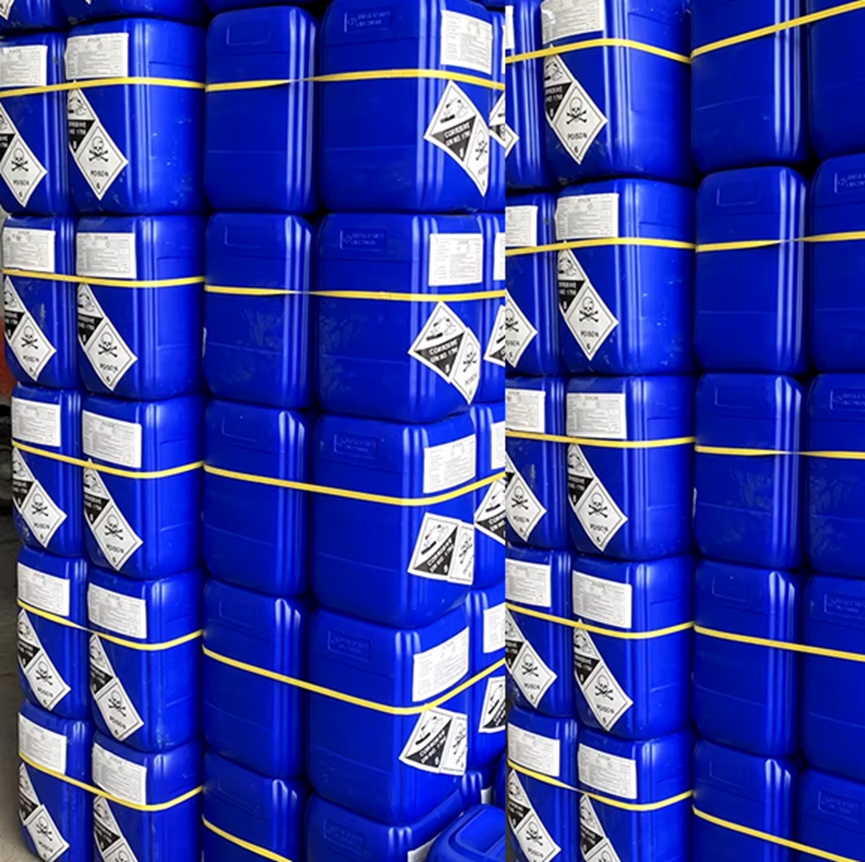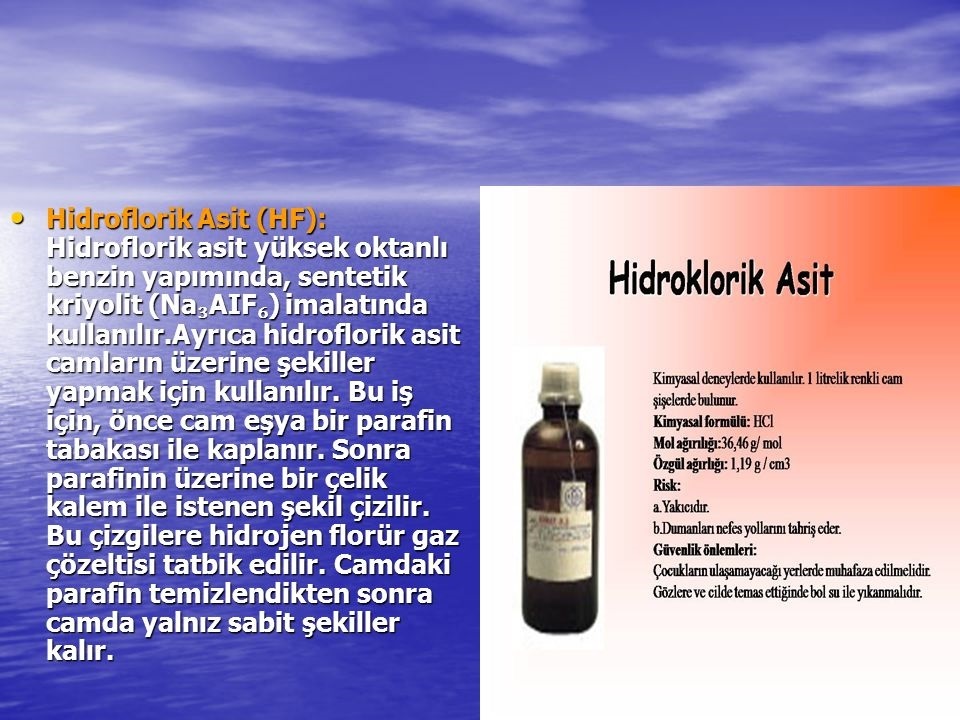We unleash your business potential by maximize the business innovation.
Send EmailHydrofluoric Acid, Fluorhydric Acid, 7664-39-3
Molecular Formula (Hydrofluoric Acid); HF
Molecular Weight; 20.01 g/mol
Chemical Name; HF
CAS Number; 7664-39-3
The chemical formula of Hydrofluoric Acid is HF. Its molarity is 20.01 g/mol. The hydrogen fluoride compound is in gaseous form, but it is the solution-formed form of HF in water. The solution of hydrogen fluoride (HF) in water is called hydrofluoric acid. It is a chemical compound containing fluoride. When hydrogen fluoride (HF) is diluted with water, products are obtained in different concentrations. Hydrofluoric Acid can be found as a colorless gas, a steaming liquid or dissolved in water. Hydrogen fluoride is a molecule with a simple 2-atom structure.
Other names of Hydrofluoric Acid:
Hydrogen Fluoride
Fluorhydric Acid
Hydrochloride
Hydrogen Fluoride(HF)
Hypofluoric Acid
Hydrogen Fluoride
Fluorohydric Acid
Anhydrous Hydrogen Fluoride
Hydrofluoric Acid
Hydrofluoric Acid technical grade
Fluoride hydrogen
70% Hydrofluoric Acid
Physical Properties of Hydrofluoric Acid:
Pure Hydrogen Fluoride (HF) can be found as a colorless gas with a density of 1.15 g/L at 25 ° C (room temperature) or as a colorless liquid of 0.99 g/L (below 20 ° C). Its boiling point, melting point and density depend on the concentration of hydrogen fluoride (HF) in its solution.
Chemical Properties:
Hydrofluoric Acid is generally in the weak acid category. But its effects are extremely strong. Its concentrated solution is extremely reactive. It is in the acid category that causes corrosive effects. This chemical can interact very quickly with bases, acids and oxidizing agents. It is the form that has the highest tendency to enter into chemical reactions at the reactive level.
Where is Hydrofluoric Acid Used?
Hydrofluoric Acid should never be used without receiving training from an expert who has technical knowledge and detailed information about this chemical. All properties of this chemical should be explained to the user in detail.
It is used in the production of refrigerants and in the production of Teflon (PTFE Plastic).
If the welding stains that occur in stainless steel welding with argon welding are not removed, they cause corrosion over time and welding gels are used to remove this. It is used with Nitric Acid in the production of these welding gels.
It is used in the preparation of fluorocarbons and many fluorine compounds.
It is used in the glass manufacturing sector to shape the glass by abrading it. It is used with Sulfuric acid to polish the glass and ensure smoothness. In this application, it is processed by immersion in an acid bath.
It is used in the metal coating sector for the purpose of cleaning the metal and removing rust by mixing it with Sulfuric acid.
In semiconductor manufacturing enterprises, cleaning is done with its solution to clean silicon plates. In semiconductor production, after one surface of the stack structure comes into contact with Hydrogen Peroxide, the excessive layers on the surface of the stack structures are cleaned.
It is used to increase the octane number in the production of high-octane fuel for aircraft and automobiles.
Other Areas of Use;
It is used for purification purposes in the production of some substances in countries with nuclear power.
It is used to produce fluoroaromatic compounds. These are 2-fluoroaminobenzene, 2,4 difluoroaminebenzene and trifluoromethylbenzene. These compounds are used in very different and diverse sectors.
For example, it is used in the production of chemical compounds used as intermediates in the production of antidepressants and insecticides.
Hydrofluoric acid is used to produce liquid crystals used in LCD television screens, computer monitors and mobile phone monitors that have now entered our lives.
In the production of cover glass of mobile phones or laptops, an etchant process is applied together with hydrochloric acid in the smoothing process of both surfaces. It is inflated with Sodium Hydroxide to remove hydrofluoric acid from the glass surface.
It is the most important compound in the production of alkanes from smaller alkenes.
In order to produce crude oil and natural gas from underground wells and to facilitate the production of oil and gas, an acidic environment must be created in the wells. During the creation of this acidic environment, organic acids with a pKa value of less than 1 are used. The efficiency increases as the duration of the acid in the well increases. The acids used here should be Hydrofluoric Acid, Hydrochloric acid or ammonium bifluoride, a compound that will give HF when dissolved in water.
It is used to produce Uranium (IV) fluoride (UF4) from Uranium Oxide (U2O3) during the reactive level Uranium enrichment process.
It is used in the production of alkyl benzene sulfonates used as surfactants in detergents classified as anionic.
In acid baths used in stainless steel sheet and stainless pipe manufacturing, 60%-70% Hydrofluoric Acid and Nitric Acid are mixed.
The connection points of stainless pipes are connected with gas welding or argon welding. In order to remove the welding stains that occur after the welding process, a solution is created with nitric acid and these stains are removed. Blasting is done.
It is used in the separation of silicon dioxide during silicon production.
The concentration of the product is important. In some areas, low-concentration hydrofluoric acid is used. This ratio can be 40%.
In oil and gas wells, one of the acids with a low pH level is used to characterize sandstone formations and to ensure that oil and gas can be extracted more easily. These are strong acids.



